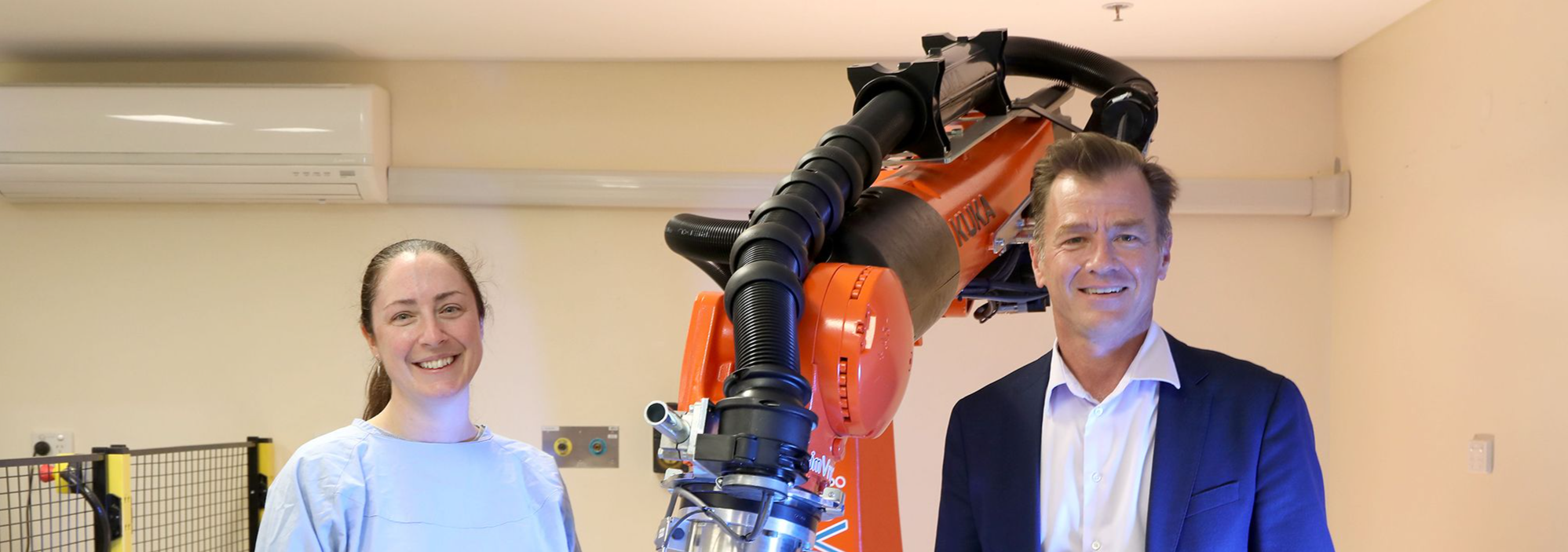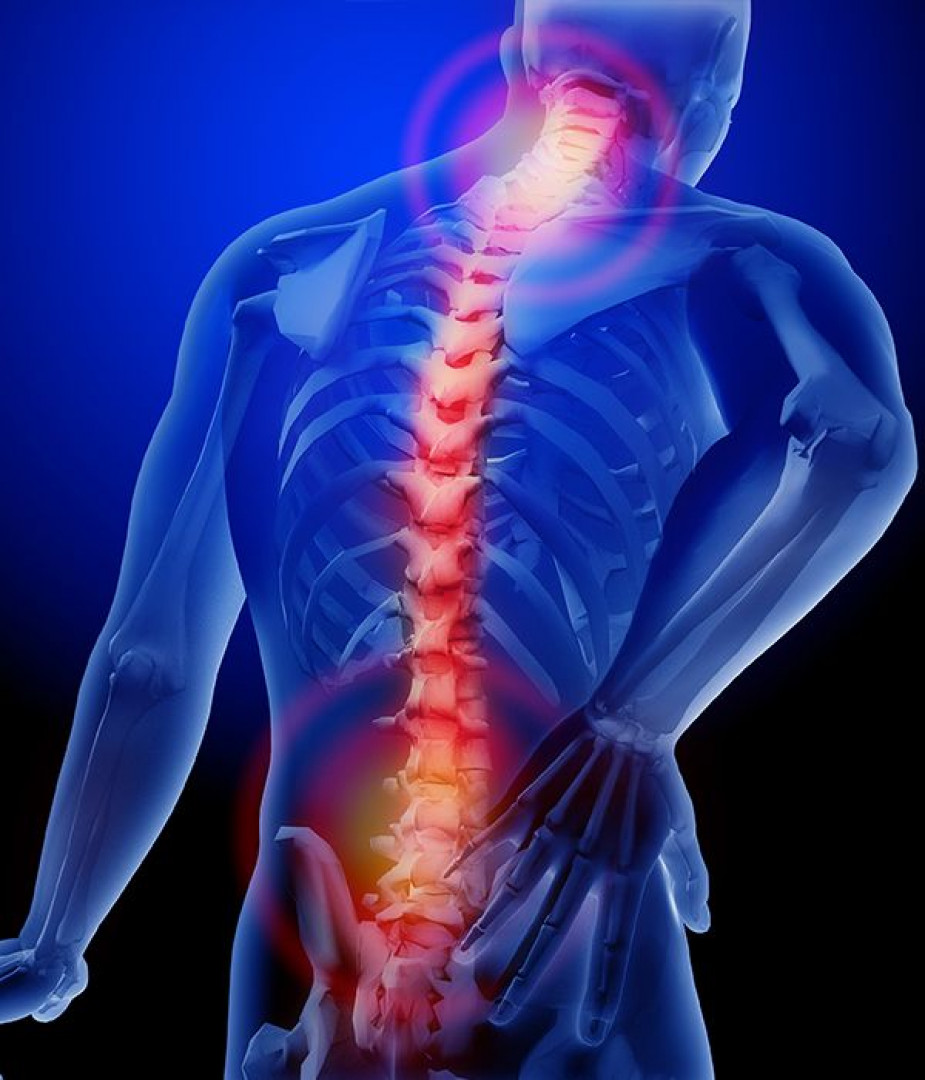Sophisticated new robot driving innovation in research and musculoskeletal care
The Kolling Orthopaedic Biomechanics Robotic Arm
World-leading technology delivering an advanced testing facility
Increasing research capabilities and guiding clinical practice
Developing new surgical techniques and medical technologies
Improving function and outcomes for those undergoing joint and implant surgery
The high-tech robot, known as KOBRA or the Kolling Orthopaedic Biomechanics Robotic Arm, is now operational at the Kolling Institute.
It is the largest of its kind in Australia and one of just two SimVitro robots in the country.
KOBRA delivers an advanced testing facility, while greatly increasing research capabilities.
The new technology represents a significant step for orthopaedic and biomedical engineering research and the development of medical technology.
It will help to drive innovation in joint surgery, with better placement and function of implants.
How it works
KOBRA will be used to simulate complex human movements on joints. This is a new way of testing joints and few other machines have the capability to test any joint in the body through a broad range of life-like manoeuvers.
This robot is unique as it can test complex movements such as hip flexing, squatting, walking and throwing, activities which involve compression and twisting. Essentially, it is able to copy human movements, giving researchers a clearer picture of how joints will perform in various situations.
The information and data provided by the new robotic technology will be applied across disciplines, extending research capabilities and leading to new surgical techniques.

Driving significant improvements in hip and knee replacements
“KOBRA will be used in the testing of implants, particularly for hip and knee replacements, to gauge how the implants will function and to help ensure the movement is as life-like as possible,” said Associate Professor Elizabeth Clarke, from the University of Sydney and Director of the Murray Maxwell Biomechanics Laboratory.
“The robot will be used to help validate computer models which assist surgeons in the placement of implants. These sophisticated models are increasingly being used to ensure the best implant alignment and function for each patient.”
Data received from KOBRA will assist surgeons working to repair chronic shoulder instability. Large numbers of patients are presenting with this injury and the information provided by the robot will help to improve the quality of research and optimise surgical approaches.
 Delivering the next big advances in surgical techniques
Delivering the next big advances in surgical techniques
“We have seen that previous innovations have come through new materials and design. The next innovations however, in joint replacement surgery will be delivered through improved biomechanics of the artificial joints implanted into patients,” said Professor Bill Walter, Royal North Shore Hospital orthopaedic surgeon and Professor of Orthopaedics and Traumatic Surgery at the University of Sydney.
“It is a very exciting time for musculoskeletal research and surgery and it’s tremendously encouraging to see this world-leading technology coming to the Kolling Institute. It will assist researchers and surgeons, and ultimately lead to improved surgical techniques, better physical function and good long-term health outcomes for our community.”
Collaboration to bring success
KOBRA will lead to new collaborations with researchers, surgeons, engineers and industry, ensuring some of the biggest biomedical and surgical challenges are overcome.
The robot will extend our national testing capabilities, while supporting Australian businesses developing medical technologies.
KOBRA has been made possible following a collaboration between the University of Sydney, the Northern Sydney Local Health District, the Kolling Institute, the NSW Investment Boosting Business Innovation program and the RNSH Staff Specialist Trust Fund.

 Associate Professor Elizabeth Clarke, PhD, BE (Mechanical Biomedical), BSc
Associate Professor Elizabeth Clarke, PhD, BE (Mechanical Biomedical), BSc
Director, Murray Maxwell Biomechanics Laboratory
Kolling Institute
USYD, Faculty of Medicine and Health

 Dr Carina Blaker
Dr Carina Blaker
Postdoctoral Scientist

Samantha Hefferan - PhD Student
Samuel Oliver - Research Assistant
Namrah Idrees - Placement Student

- Assessing kangaroo tendon as a graft for human ACL and tendon surgery in the hand
- The role of prior mild joint injuries, such as sprains, in the risk of severe knee injury and osteoarthritis
- Effects of tendinopathy on tendon biomechanics, biochemistry, structure and molecular biology
- Injury, repair, reconstruction, and regeneration of tendons and ligaments
Murray Maxwell Biomechanics Laboratory related information
Events, News and Seminars
National campaign to combat misinformation about osteoarthritis care
Posted on: 09 October, 2025
Co-inciding with World Arthritis Day (12 October), researchers from the University of Sydney and the..... Read more
Category: Musculoskeletal Research, Research Excellence
September 2025 Kolling NEWS
Posted on: 23 September, 2025
Our latest Kolling Institute newsletter is out detailing the very latest updates from our expert tea..... Read more
Category: Awards, Cardiovascular and Renal Research, Musculoskeletal Research, Neuroscience and Pain Research, New Treatment, Research Excellence
Changing of the guard
Posted on: 15 September, 2025
After more than 25 years leading visionary research, Professor Ian Cameron has stepped down as the h..... Read more
Category: Musculoskeletal Research, Neuroscience and Pain Research, Research Excellence









